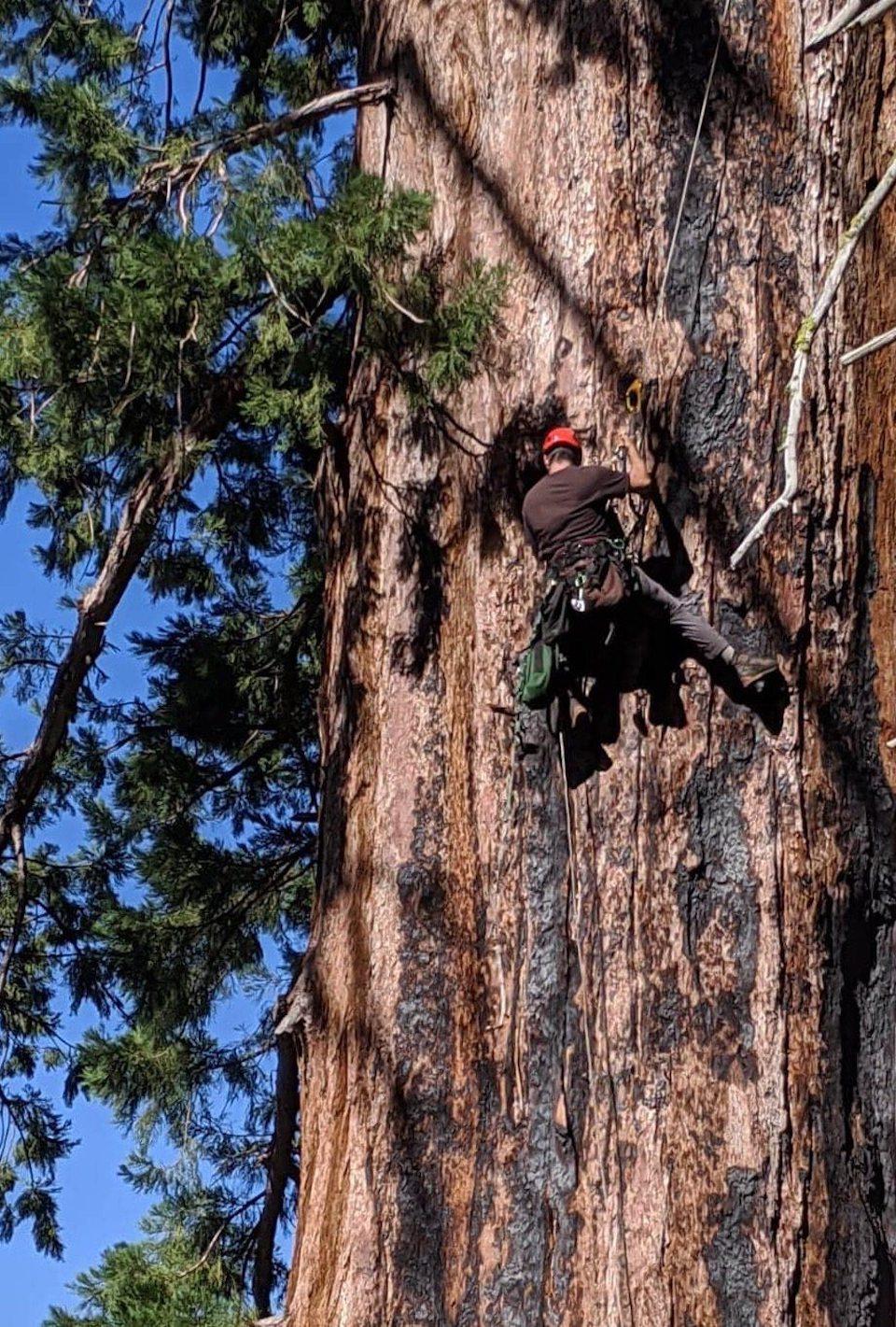
Scientists are trying to find the cause of sequoia deaths in Kings Canyon, Sequoia, and Yosemite national parks/NPS
Researchers are trying to determine why some mature sequoia trees in Sequoia, Kings Canyon, and Yosemite national parks have died.
The studies were prompted by the deaths of at least 30 mature sequoias in Kings Canyon and Sequoia and several in Yosemite between 2014 and 2019.
To understand which trees are in danger, the first step is discovering where water in their xylem (water transport tissue) actually comes from—whether it's drawn from long-lasting underground reserves, or shallow surface moisture susceptible to drought. Believe it or not, scientists can tell the difference between surface and groundwater by tiny differences in the atoms that make water molecules (to get technical, it's called an "isotopic signature").
This past summer researchers began looking for answers high in the canopy of the Mariposa Grove in Yosemite. By analyzing isotopic signatures from xylem samples taken before and after prescribed burns, they can begin to answer the big questions:
- Do trees in wet and dry environments depend on the same water source?
- Does that change with the season?
- Does fire damage change where a tree gets its water?
- Can fuel reduction before a burn mitigate that damage?
Until data collection and analyses finish, the National Park Service won't know the answers. But it's a drama that's playing out in real time—threatening the parks' ability to protect sequoia groves in the face of climate-driven droughts. Even these forest giants balance on a narrow margin of survival.



Comments
Agreed! Climate crisis is the cause, not conspiracy theories!
Hard to say what's causing all this. Is it natural or man-made??? Many roads/parking/lots where smack dab in the middle of our Sequoia Groves for a long long time (Mariposa Grove as an example contributing to constant vehicular vibration, exhaust fumes, sound pollution, etc). Only in the last few years has this changed for Mariposa Grove. Time will tell the story.
Yes, it's so very hard to say what might sudenly be causing these ancient trees to just ...die. Personally, I've long been convinced it's due to the mischief of the gnomes, leprechauns, and gremlins who live among the trees and I even spent time hiking through some of these groves looking for evidence of these little buggers to prove my point. But, I never got very far on any of these hikes because of the extreme dehydrating heat around the trees. It was a strange, unusual, just plain unnaturally oppressive heat that I never experienced on my hikes, even much longer hikes, through those groves in decades past. The heat was so bad during my recent visits. Although I was perspiring profusely and the air was so dry that it was evaporating my perspiration almost instantly, the heat was so overpowering that I couldn't transpire fast enough to keep me from overheating. I'm absolutely positive that the gnomes, leprechauns, and gremlins who live there are causing the temperatures to rise and the air to dry out; but, I still don't know what's bothering all those ancient trees.
Humphrey, have you been listening to "Strange Familiars?" Ok, be well.
Of course there are no chemtrails, but in a way those contrails are killing sequoias. The increase in air travel and fossil fuel vehicle pollution is adding carbon to the air and therefore is impacting all ecosystems. The increasing temperatures in winter is changing the dieoff rate of wood eating insects. This impacts the wood-wide web which in turn changes the transport of minerals to the phloem. Water diversions and wells in fractured rocks aquifers decrease the amoint of available groundwater. Of course the cycle of drought - floods seems to have changed making the drought cycle longer and the flood cycle shorter. So contrails via increased atmospheric carbon do kill ecosystems. All biodiversity relies on complex processes to exist optimally. Science is not black and white. Fly safely.
I think chem trails carry aluminium and other "ingredients" which make them different to contrails.
The 5G tower no doubt.
That's a lot of words to simply say "i don't understand science but i believe the YouTube dude!"